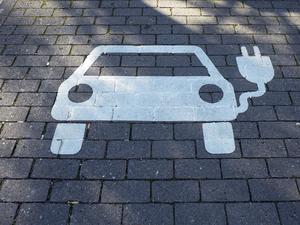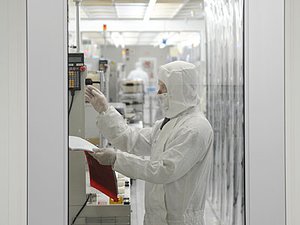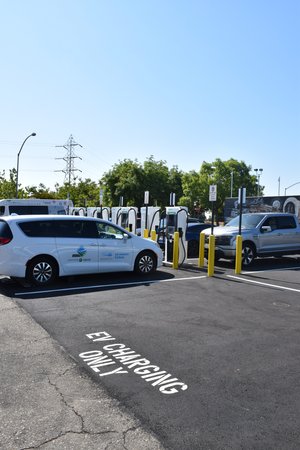![Muffi Headshot (2)[33]](https://media.bizj.us/view/img/12546802/muffiheadshot-233*540xx3101-4135-0-0.png)
On a recent sunny morning in Sacramento, a glimpse of the future was on display.
The Twin Rivers Unified School District cut the ceremonial ribbon on their new electric school bus charging depot. With nearly 80 electric vehicle chargers, the public school district will save taxpayers money on fuel while reducing greenhouse gas emissions.
This is part of an encouraging trend across the nation. California leads the country in electric school bus commitments, and the number of school districts and fleets committed to adding electric vehicles has tripled since 2021, according to the World Resources Institute.
What’s made this revolutionary shift in transportation possible?
Certainly, local leaders nationwide deserve credit for recognizing the effects of air pollution and climate change in their communities. It’s also due to the public sector funding bold solutions to reduce emissions — creating, in essence, a massive public-private partnership.
Increased public funding is making it easier to go electric. This includes numerous California Air Resources Board and California Energy Commission programs that have funded more than 1,600 electric school buses to date.
But electric vehicles aren’t just for schools — businesses are also getting on board.
Two-thirds of surveyed commercial vehicle fleet operators say they have sustainability goals, with 60% planning to go electric in the next two years. At the same time, businesses remain highly focused on bottom lines. Nearly half of fleets have extended the lifecycle of their commercial vehicles, turning over just 10-15% of their vehicles each year.
Electric vehicles are just part of the story — the other is wider access to consistent, reliable charging. Almost half of commercial fleet managers say a lack of convenient charging options is their biggest concern in moving to electric vehicles.
These trends provide an opportunity for public and private sector collaboration, putting more electric vehicles in the driveways of homes, businesses and offices everywhere.
Continuing to grow the nation’s network of more than 130,000 public charging stations is paramount. But it’s just as important to make private charging accessible for businesses, as commercial fleets in the market for electric vehicles expect to charge at private charging stations 80% of the time.
That’s why companies large and small considering the switch to electric vehicles should take advantage of all their options, from state and federal EV tax credits to business-specific financing programs for charging infrastructure.
These electric vehicles have a real impact. Twin Rivers estimates that their electric school buses and charging software have saved the school district more than $9,000 by scheduling charge times during non-peak hours. Studies have shown that electric vehicles and charging software could lower the cost of fleet ownership by up to 20%. And every dollar spent on smart charging returns businesses four dollars in energy savings.
The charging depot ribbon-cutting in Sacramento was a step closer to that future, one in which children have safe transportation to school and businesses get the job done with less time, money and emissions.
Electric vehicles, chargers and software are powering the next generation of work. And public-private investment and ingenuity are powering the next chapter of our shared future.
Muffi Ghadiali is general manager of Ford Pro Charging at Ford Motor Company. He lives in the Palo Alto area.









